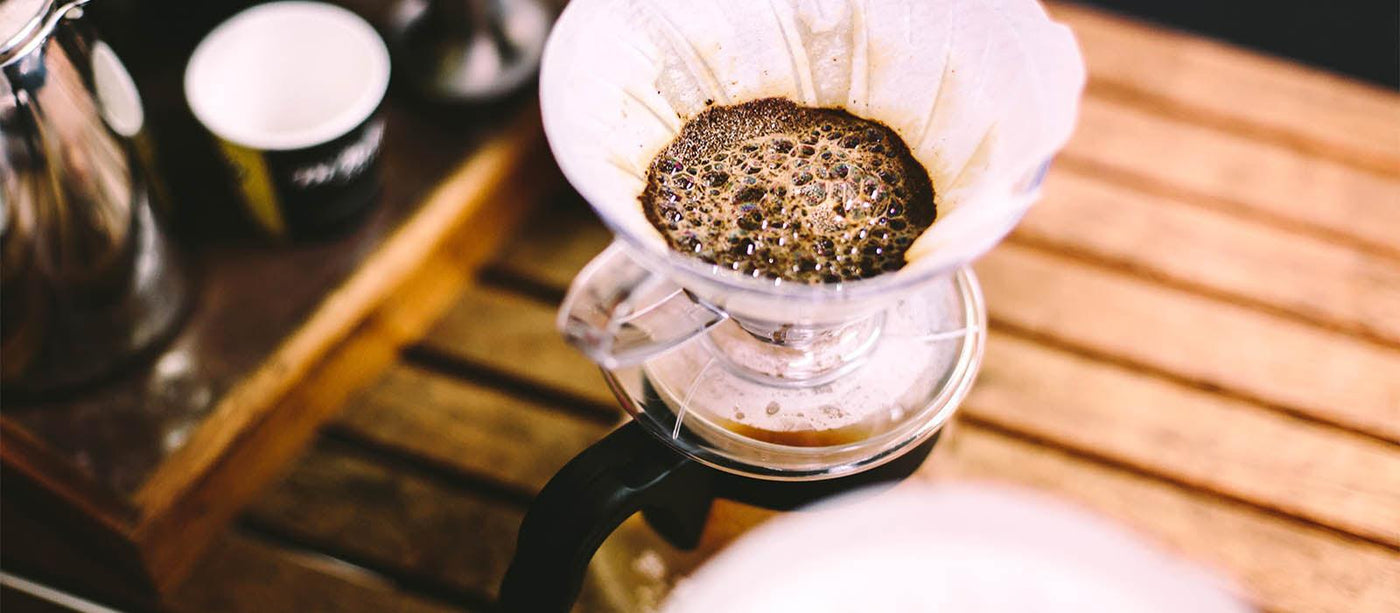Revealing the Scientific Research Behind Different Coffee Brewing Methods and Their Benefits
Revealing the Scientific Research Behind Different Coffee Brewing Methods and Their Benefits
Blog Article
Exploring the Art of Coffee Brewing: A Comprehensive Overview to Developing Your Cup
The art of coffee brewing is a multifaceted self-control that merges scientific research with personal expression, where the choice of beans, water quality, and developing techniques converge to produce a polished sensory experience. Recognizing the nuances of various coffee beans, specifically the differences in between Arabica and Robusta, is important for any type of fanatic. The option of appropriate equipment and meticulous attention to brewing specifications can substantially affect the last result. As we check out these aspects, one must think about exactly how even minor adjustments can lead to profound adjustments in taste and scent-- what might these modifications expose about your perfect cup?
Recognizing Coffee Beans
To absolutely appreciate the art of coffee brewing, one need to first understand the fundamental element: coffee beans. These tiny seeds, commonly obtained from the Coffea plant, are essential in determining the taste profile, fragrance, and general quality of the made beverage. Coffee beans mostly fall right into two groups: Arabica and Robusta. Arabica beans, understood for their fragile flavors and greater acidity, are usually favored by aficionados. In contrast, Robusta beans have a stronger, extra bitter taste and greater caffeine material, making them suitable for espresso blends.

Furthermore, the handling approach-- whether cleaned, all-natural, or honey-- affects the beans' final taste. Recognizing these elements permits makers to pick the ideal beans that line up with their liked flavor account, eventually improving the coffee developing experience. coffee brewing methods. This understanding is necessary for any person aspiring to understand the craft of making the excellent mug of coffee
Developing Approaches Described
Several fanatics locate that the option of brewing technique considerably impacts the final flavor and fragrance of their coffee. Each approach uses various extraction techniques, influencing the coffee's personality and splendor.
Drip brewing, one of one of the most preferred techniques, utilizes a device to drip warm water through ground coffee, creating a regular and tidy cup. French press, on the other hand, submerses coffee grounds in hot water, permitting for a fuller body and even more robust taste, as oils and fine particles continue to be in the mixture.
Pour-over brewing supplies a careful method, where water is manually put over coffee grounds, permitting exact control over extraction time and temperature level, leading to a nuanced and intense cup.
Coffee, a concentrated coffee brewed under stress, is known for its solid flavor and luscious structure, functioning as the base for different coffee drinks, consisting of cappuccinos and cappucinos.
Important Tools Needed
The structure of any kind of successful coffee brewing process exists in top quality equipment tailored to your favored approach. A reliable coffee grinder is important; fresh ground beans significantly enhance flavor and scent.
Following, consider your developing tool. Options range from drip coffee machine and pour-over configurations to French presses and espresso makers. Each approach supplies distinctive flavor profiles and brewing techniques, so choose one that aligns with your taste preferences.
An accurate scale is likewise vital, permitting you to gauge coffee and water properly, which is essential for uniformity. In addition, a thermostat can aid keep an eye on water temperature level, as it straight affects extraction high quality.
Mastering Water Quality
The quality of water used in developing coffee plays a substantial function in identifying the last taste profile of the cup. Numerous aspects add to water top quality, consisting of mineral material, pH level, and total purity. Preferably, water must be devoid of impurities and contaminations, as these can adversely impact the taste of coffee.
Minerals, such as calcium and magnesium, boost the extraction of tastes from the coffee premises, while keeping a balanced pH level-- around 6.5 to 7.5-- is necessary for optimal removal. Water that is too soft might cause under-extraction, resulting in weak or sour flavors, while extremely hard water can generate a bitter or severe mug.
For the very best outcomes, filtered water is suggested, as it lowers the existence of chlorine and various other unfavorable materials typically located in faucet water. In addition, consider utilizing water with a Total Dissolved Solids (TDS) find out here level in between 150-200 ppm, which is generally suitable for coffee brewing. By grasping water top quality, you can lay a solid foundation for attaining a regularly exceptional mug of coffee, allowing the special features of your chosen beans to radiate through.

Tips for Flavor Improvement
Enhancing the taste of your coffee can significantly raise your developing experience and highlight the unique nuances of your selected beans. To accomplish this, take into consideration several essential elements that affect preference.
To start with, the work dimension plays an essential function. A finer work boosts removal, causing bolder tastes, while a coarser work returns a milder mug. coffee brewing methods. Readjust your work according to your developing method to achieve optimal results
Secondly, experiment with brew time. Over-extraction can lead to bitterness, while under-extraction lead to a sour taste. Go for a brew time that go to this web-site balances these extremes, typically between two to 4 mins, relying on your approach.
In addition, temperature level is a crucial component. Developing with water that is also warm can swelter the coffee, while water that is as well amazing may fail to extract adequate taste. The excellent temperature level variety is 195 ° F to 205 ° F(90 ° C to 96 ° C)
Final Thought) )))) Finally, the art of coffee brewing is a complex technique that needs a deep understanding of different elements, consisting of bean option, brewing methods, and water quality. Proficiency of necessary devices and attention to information in work size, make time, and temperature level are important for achieving optimum removal. By integrating these parts, coffee fanatics can raise their developing strategies, leading to a mug that not just satisfies individual preferences but likewise showcases the rich intricacy of coffee flavors.
The art of coffee developing is a multifaceted self-control that combines science with Get More Information individual expression, where the choice of beans, water high quality, and developing methods assemble to create a refined sensory experience.To genuinely appreciate the art of coffee brewing, one need to first comprehend the fundamental component: coffee beans. Brewing with water that is as well warm can scorch the coffee, while water that is as well trendy may stop working to draw out ample flavor. In final thought, the art of coffee developing is a complex practice that needs a deep understanding of numerous components, including bean selection, brewing techniques, and water top quality. By incorporating these components, coffee lovers can raise their developing strategies, resulting in a mug that not just satisfies personal preferences however likewise showcases the abundant intricacy of coffee tastes.
Report this page